
Background information
Why I like boring films
by David Lee

When blood splatters and aliens take over the world on the big screen, Lee Joyner has something to do with it. He's a make-up artist in Hollywood and has worked on titles including «Godzilla» and «Star Trek: Beyond». Read on for an insight into the world of special effects and alien creatures.
My nerves haven't been able to handle horror films for years. Mainly because I lie awake in bed after I've watched them and struggle to separate fact from fiction. Violence-heavy scenes with blood and scary faces get to me in particular. What is an absolute nightmare for me appears to be paradise for Lee Joyner. The 50-year-old has worked as a special effects make-up artist in Los Angeles since 1995 and heads up the renowned «Cinema Makeup School», where the teaching staff includes Oscar-winning artists. Creating sculptures and alien creatures is Lee's passion. He has worked on films including «Godzilla» and «Star Trek: Beyond».
Lee, can you explain to me exactly what SFX means?
Lee Joyner, Director of Admissions at Cinema Makeup School:
SFX is the abbreviation for «special effects» and a collective term for special visual effects. It also covers computer-generated imagery (CGI) and keyframing, an animation technique that comes from cartoons. When it comes to make-up artistry, the specific term is SFX make-up or FX make-up. This isn't about highlighting someone's beauty with make-up; it's about creating as realistic an effect as possible. Specifically, this means that I make people look older for film projects, change the appearance of their faces, add wounds and scars and create realistic aliens, monsters and other fantasy creatures.
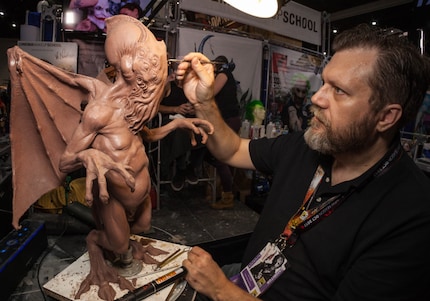
When I think about SFX make-up, I only really think about wounds, scars and a lot of blood. I assume this is a very one-sided view of your craft?
Yes, you're right. Aside from fake blood, make-up artistry involves working with different paints, from alcohol and water-activated materials to fat, cream and adhesive-based shades. Which ones I use depends on which material I'm working on and what conditions my work has to last in.
Creating and using artificial body parts is also essential. This field is called prosthetics. It's all about «components» which we use to change the size or structure of a face, body part or even a whole body. First, we create a 3D copy of the actor's or actress' body or face, which we then use to model the prosthetic on. Tailoring these pieces ensures that they will fit like a glove on set. We often use a flexible material such as silicone for prosthetics so that actors and actresses can still convey their expressions and gestures despite the restrictions.
Using «bald caps» is also a part of our work. They look a bit like a swimming cap, covering the hair underneath to mimic baldness. Adding facial hair, creating fake tattoos and artificial aging are all skills that a special effects make-up artist has to master. And, last but not least, there's my personal passion: modelling and creating sculptures of different creatures.
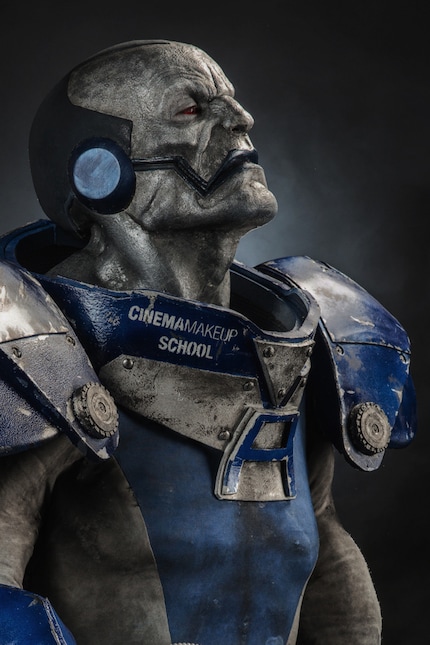
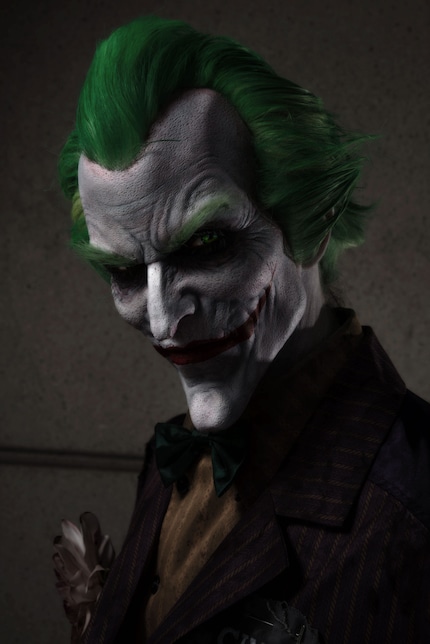
Do artists specialise in these specific fields?
They do, yes. A lot of artists are known for a specific skill set and renowned as specialists in their field. This is why they also tend to prefer specific jobs. Nevertheless, it's important that every make-up artist has a certain level of expertise in all areas.
When I attended IMATS (the Make-up Artists, Exhibitors and Enthusiasts Trade Show) in London, I was overwhelmed by the huge selection of fake blood. I assume it's also a science for you.
Lots of brands sell fake blood. This is because you need different types for different kinds of scene. You'll find everything from light to dark and thin to viscous. There's blood for eyes, blood for mouths, dried blood, blood for spraying, arterial blood, blood gels and so on. When blood has to spray, for example, you need something that will flow through a pump system easily. In other cases, you need a product that can be removed from bleached hair or a white wedding dress.
What does the process look like from idea to implementation on a film project?
I start by reading the script and having several discussions with the director. When the team works with filmmakers, they usually have a clear idea of what they would like. My job is implementing their design exactly or interpreting it in a way that works for the actor or actress. As far as creative freedom is concerned, it varies from project to project. You can usually experiment more on low-budget projects. Or when someone is known for a certain style.
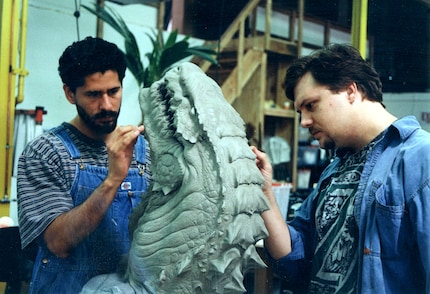
Can masks and prosthetics be worn multiple times? Actors and actresses have to look the same day after day.
No, that's not possible unfortunately. Unless we use a silicon mask that we can pull right over the actor's or actress' head or a foam latex mask for extras. But on shoots we're usually supported by a filmmaker who constantly works on creating new identical prosthetics. This ensures that the transitions from skin to artificial material are clean, the adhesive holds and no fat, dirt or residual glue remains from the day before.
How do you make sure that the person underneath the mask can breathe properly?
That comes with experience. Sometimes when the nose is covered, I can make small channels under the prosthetics that can let out in a hidden spot and allow air to circulate. Certain masks can be designed to include concealed breathing passages. The rule of thumb is: there has to be at least one proper airway, either for the nose or for the mouth. Safety is the priority.
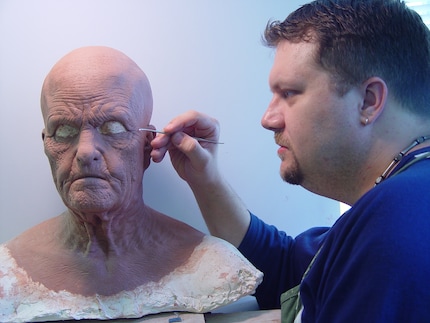
Does computer animation pose a threat to artists like you?
I would actually say that it poses a threat to the audience as long as it's based entirely on CGI. If you go by the motto «let's do everything after the fact», the project is doomed to failure. If, however, technology is used to enhance actual effects and make-up, things turn out well. A good example of this synergy is the film «Where the Wild Things Are», which was filmed using real monster costumes. The eye and tail movements were then digitally enhanced afterwards.
The human subconscious is wiser than film producers think. Just think: people still laugh and cry when they see Kermit the Frog and E.T. on their screens, even though they're clearly puppets. It's physical things that stir our souls. There's no denying it. There have only been a few masterful digital creations in the last few years – and they were hugely expensive. When was the last time a computer-animated character made you cry? What scares you more, a CGI beast or a physical creation? If you compare the werewolves in «The Howling» and «American Werewolf in London» with «American Werewolf in Paris» or even «Twilight», the answer is obvious. The reaction of actors and actresses to creatures and characters that are actually standing right in front of them, how light is reflected by them, the shadows that they create...CGI can't replace any of that.
Find more information on the Cinema Makeup School here.
Header image: Lee working on the Star Trek Beyond film. He sculpted Loleeki for Joel Harlow Designs, designed by Carlos Huante.
As a massive Disney fan, I see the world through rose-tinted glasses. I worship series from the 90s and consider mermaids a religion. When I’m not dancing in glitter rain, I’m either hanging out at pyjama parties or sitting at my make-up table. P.S. I love you, bacon, garlic and onions.
Interesting facts about products, behind-the-scenes looks at manufacturers and deep-dives on interesting people.
Show all